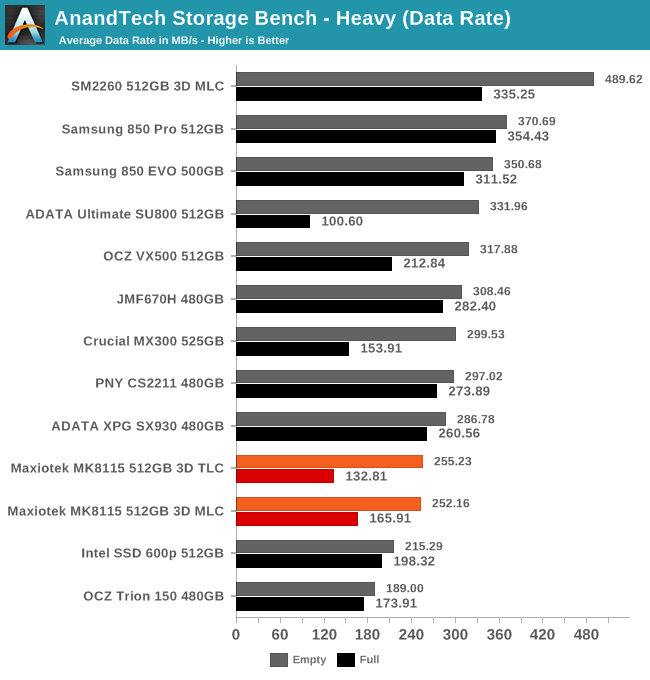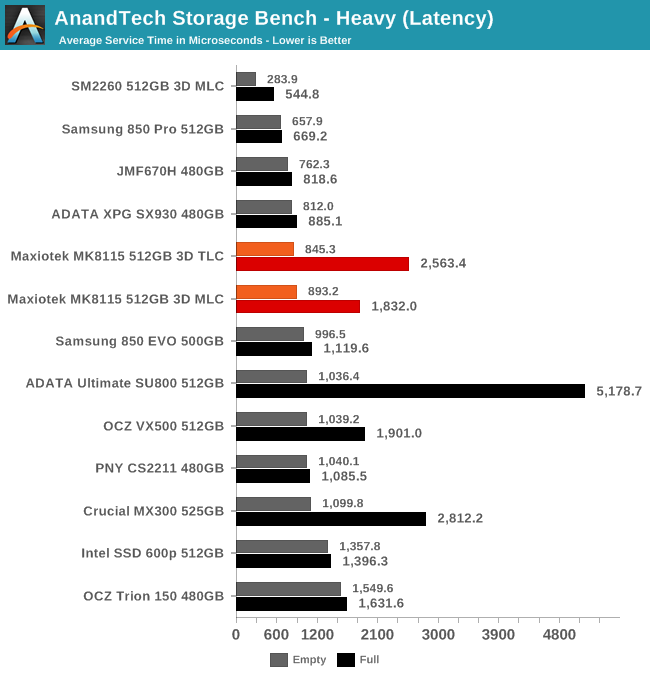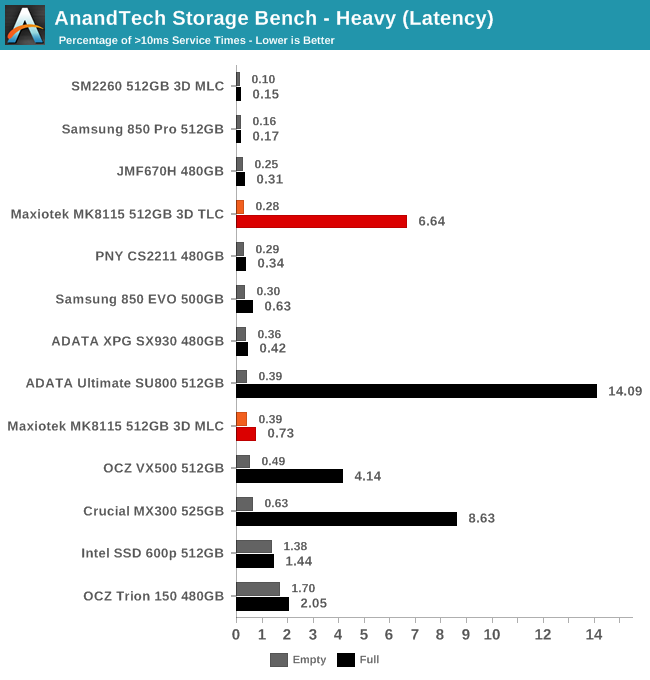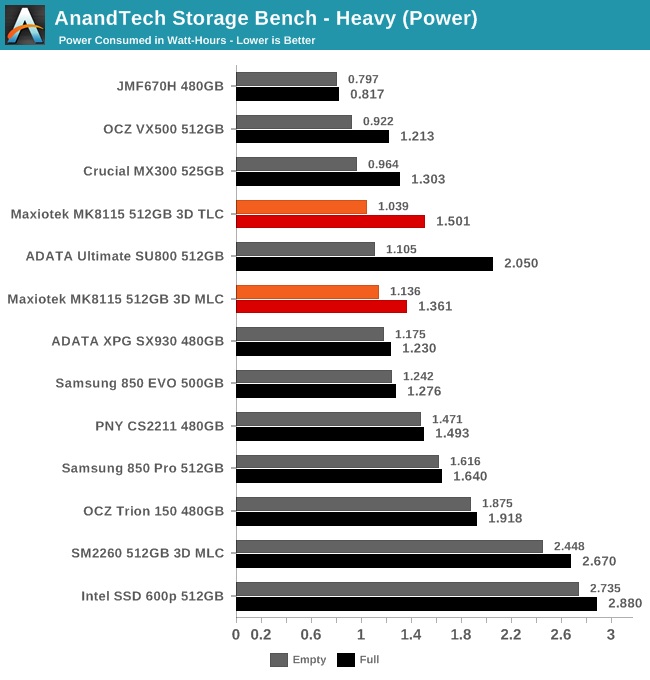Previewing Maxiotek's MK8115 SSD Controller: Can DRAM-less Drives Make The Cut?
by Billy Tallis on May 9, 2017 8:00 AM ESTAnandTech Storage Bench - Heavy
Our Heavy storage benchmark is proportionally more write-heavy than The Destroyer, but much shorter overall. The total writes in the Heavy test aren't enough to fill the drive, so performance never drops down to steady state. This test is far more representative of a power user's day to day usage, and is heavily influenced by the drive's peak performance. The Heavy workload test details can be found here.

The average data rates of the two MK8115 drives on the Heavy test are almost exactly the same when the test is run on an empty drive. Unfortunately that puts both of them quite near the bottom of the charts, behind the older JMicron drives and the other SATA SSDs using Micron 3D NAND.
When the test is run on a full drive, the MK8115 drives' performance suffers greatly, which has also been true of the other two SATA SSDs with Micron 3D NAND that we've tested. Most other SSDs show a far smaller degradation in performance from a full drive.

As on The Destroyer, average service times from the MK8115 drives aren't bad at all, if the test is run on an empty SSD. When the drive starts out full, average service time more than doubles, putting the MLC drive only slightly ahead of the OCZ VX500 and the TLC drive a little ahead of the Crucial MX300.

Both MK8115 drives have good control over high latency outliers when the Heavy test is run on an empty drive. The TLC sample surprisingly scores a bit better than the MLC sample. However, when the test is run on a full drive, the MLC sample's performance degradation is moderate while the TLC drive falls apart, though not quite to the extent of the Crucial MX300 or ADATA SU800.

The energy usage scores of the MK8115 drives on the Heavy test are good. The Crucial MX300 is still a bit better overall, but the Micron 3D NAND drives in general are all fairly efficient. They also all suffer noticeably when the test is run on a full drive, but it's not enough to make them worse than the slowest planar TLC SSDs or the fastest MLC SSDs that prioritize performance over power efficiency.










60 Comments
View All Comments
romrunning - Tuesday, May 9, 2017 - link
Here's an example of performance regression - the Intel 600p versus any other Intel PCIe SSD (like the Intel 750 or P3700). Clear performance drop.Don't confuse it with price differences or target buyer - you only asked for an example of performance regression.
MajGenRelativity - Tuesday, May 9, 2017 - link
The 600p isn't even targeted at the same market segment. That's like saying that every single SSD released since the Intel P4800X is a performance regression because it can't come close to those random IOPS. I'm talking about a performance regression within the same price segment.CheapSushi - Wednesday, May 10, 2017 - link
The Intel 600P is TLC NAND and the Intel 750 is MLC NAND.... maybe you don't know the difference? TLC is inherently slower than MLC; 3 bits per cell vs 2 bits per cell.MajGenRelativity - Thursday, May 11, 2017 - link
A. I know the difference. B. MLC vs TLC isn't even the point. C. My point still stands because the 600p is not targeted at the high end.satai - Tuesday, May 9, 2017 - link
There are some cheap models and there some awesome models (Intel 750 and Intel Enterprise models, Samsung 960s, Optanes...). Pick yourself.MajGenRelativity - Tuesday, May 9, 2017 - link
The Intel Optane enterprise drive certainly is awesome, but I find it's price a bit hard to sell an average consumer on.melgross - Tuesday, May 9, 2017 - link
Well, all new technologies cost the most at first, and much less later. Performance is the opposite. The worst at first, and much better later.Next year, the price of Optane will be half of what it is now, but for a 512GB board, rather than the 375GB board it is now. Still expensive, sure. But you just have to learn to be patient.
WinterCharm - Tuesday, May 9, 2017 - link
On the bright side, Optane should be a lot cheaper to produce in the long run. While it's terrible as an accelerator, it's fantastic as a standalone drive. Prices will come down over time.CheapSushi - Wednesday, May 10, 2017 - link
Is the average consumer one that even reads about these things? The average consumer just goes to Best Buy and a salesman tells them what to get. Anyone who reads AnandTech and/or actually read the reviews about Optane aren't average consumers anyway.MajGenRelativity - Thursday, May 11, 2017 - link
True, but I doubt most of us still have the money for a $1,500 375GB SSD